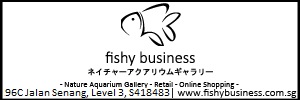Rainwater is too soft for peat and fish. You need some potassium, in case the peat releases any sodium, and you will probably see some ammonium if you want to test for it. A little Ca and Mg and HCO3 wouldn't hurt, either.
I never, ever, under any circumstances use pure rainwater, DI, distilled or even water from a good RO filter without adding back some essential electrolytes. I either dilute it with harder tap water, or add some "Equilibrium" and baking soda.
The reason is that lack of good buffering can run the pH high (lime will do it, easily) and cause ammonia burns. Any accidental introduction of sodium can be fatal without the other essential blood electrolytes. The peat can release sodium ions or feeding bbs can introduce them.
Don't waste that good soft water, just aerate to get rid of ammonia, dilute it with harder tap water, and move on. After this, I'd suggest you boil the pellets to make them safer. If you call the manufacturer, they will admit to the lime, but USDA doesn't mandate it on the label, so they just keep quiet, figuring correctly that it can only alarm gardeners. It really does prevent seedling damp off.
I don't think AUS (or most other killifish eggs) are very light sensitive. The velvet flagellates are able to photosynthesize and stay alive for several days, if there is very much light, so dark has something going for it. In darkness, they must find a host within 24 hours or they die, when in the free-swimming stage. Myths can come from strange indirect places, sometimes.
A bit under a tsp. of salt per G (and maybe a drop of acriflavin) can take care of them very nicely, so be sure you have the other electrolytes and then you can watch the eggs in normal light, AFAIK.
IDK why more folks don't spawn their AUS over peat.
BTW, they are an estuarine species and need a bit of salt in their not-too-soft water. Ever notice how folks in hard-water areas consider them a prolific beginner fish, and those with soft water find them so difficult? 
Wright
Ps. Quit editing your posts after I have already answered them. 
01 760 872-3995
805 Valley West Circle
Bishop, CA 93514 USA
which are not growing out all that well. I've been beating my head against the wall for why they crashed
The Jiffy 703(?) pellets I received when I first joined the hobby were Norwegian-made, or so I was told. I was informed











 Reply With Quote
Reply With Quote


Bookmarks